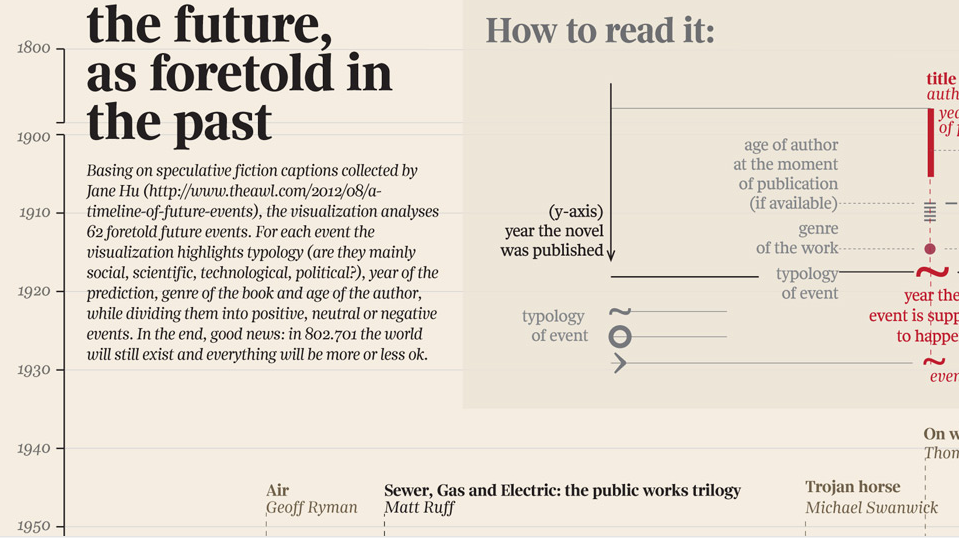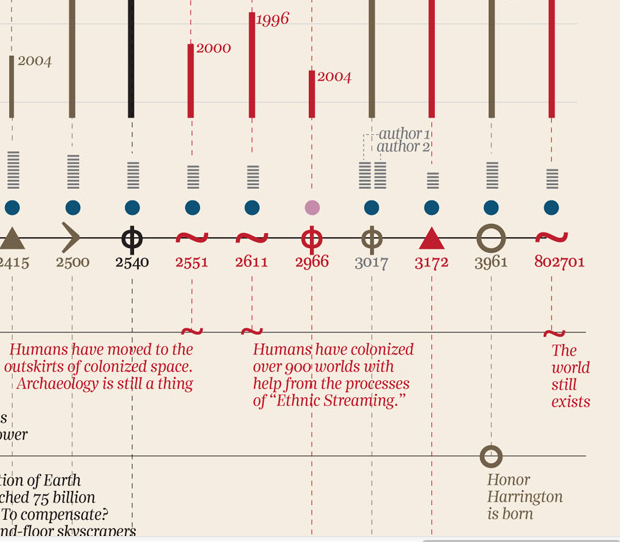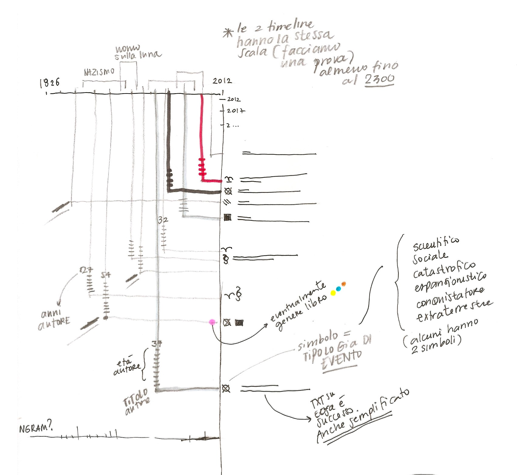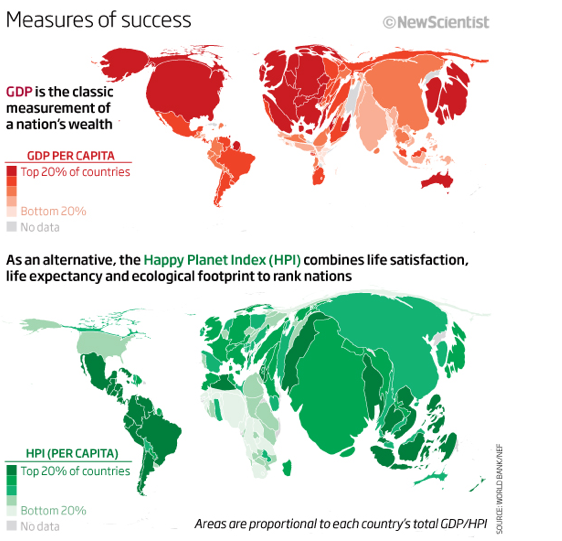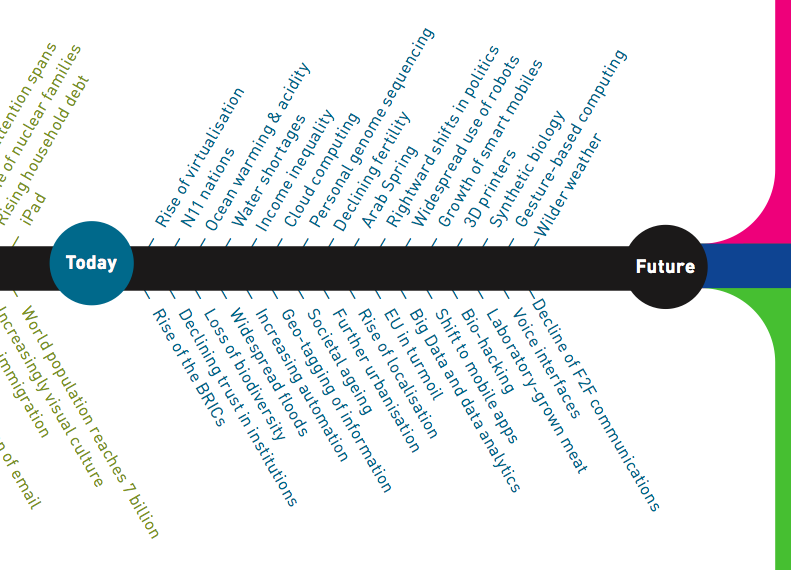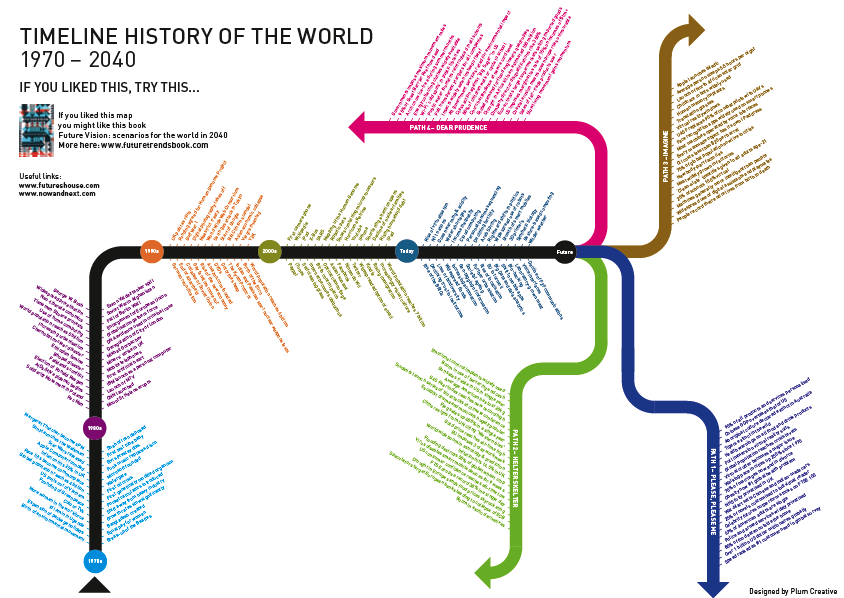
Having just co-authored a book on how to do scenario planning (FutureVision by Richard Watson and Oliver Freeman) I thought it might be worth passing on a few tricks. Here is part one of my top 20 tips for creating practical scenarios, but first a very brief outline of the process. Please note that this process has been shortened and simplified for this article. If you would like the expanded process get in touch (richard@deletethisbitnowandnext.com)
Stage 1: Develop the framing question(s)
Stage 2: Examine past and present drivers of change
Stage 3: Brainstorm future drivers of change
Stage 4: Identify the critical drivers
Stage 5: Build a scenario matrix
Stage 6: Develop scenario logic
Stage 7: Build the scenario narratives
Stage 8: Create timelines linking future to present
Stage 9: Map the strategic implications
Stage 10: Develop proactive and reactive strategies
(Conduct ongoing scanning and monitoring)
Now, some tips…
Tip # 1: Get enough buy-in from the get-go
Ensure that you have enough support for the project from the start. Ideally find a senior supporter who has been involved with scenarios before or supports the theory of doing the project. Also make sure that support is as wide as possible and not limited to any one department or business unit. If the prevalent attitude within the organization is that the project is a waste of time and money this will almost certainly turn out to be a self-fulfilling prophecy.
Tip # 2: What do you want to know?
Start with a tightly focussed question about what it is that you want to know. Simply asking ‘what does the future look like?’ is next to useless. The subject is too broad.
For example, if you are a retailer you might be interested in exploring the extent to which retail moves to mobile devices or virtual stores. Feel free to revise or change the question at any time throughout the process though.
Tip # 3: Give it enough time
A rigorous scenario-thinking project will take a minimum of 2-3 months. If you only have a few days you are totally wasting your time. A key component of scenario thinking is conversation and sometimes the conversation won’t flow no matter what you do. It also requires periods of reflection, which by definition cannot always be scheduled in the diary or with meeting reminders. If you rush things you will just come up with the obvious stuff. Finding out what’s not being said or seen is a key part of the process and this takes time.
Tip # 4: Embrace diversity
Groups of experts are useless for scenario thinking. They will either all agree with each other (group think) or will say nothing at all due to peer pressure. However, by themselves experts can provide good insight. Mixed with other people with different skills and experience things can get very interesting indeed. Diversity is critical with scenario thinking so resist silos and homogenous groups at all costs. The trick is to mix things up in terms of age, gender, skills, experience, functions and so on.
A good size scenario building team is generally 3-6 people, although this is merely the tip of the iceberg. When it comes to the initial research, workshops and key meetings this can be expanded significantly.
Tip # 5: Quantity is quality when it comes to drivers
After you have spoken with people – both internally and externally – the next stage is generally to unearth a series of driving forces that are influencing or changing the external environment. This can be a messy stage, because it’s not clear at the start what’s important and what isn’t. Moreover, when it comes to drivers (call them trends if you really must) quantity really is quality. You need to generate dozens of them and have people running around to check them and to find more.
A good way of creating drivers is to use STEEP (Society, Technology, Economy, Environment, Politics), You might prefer STEEPEN (Society, Technology, Economy, Energy, Politics, Environment, Nature) or STEEEPA (Social, Technical, Economic, Environmental, Educational, Political and Aesthetic).
Tip # 6: Is that really the answer?
When you get to your first shortlist of drivers, ensure that the drivers you select really are drivers and not a consequence of other, far deeper, drivers. For example, a shift to social media might be a consequence of something far deeper.
Tip # 7: Naming the scenarios
The naming of scenarios is really important. If you have to explain to people what the scenarios mean you have failed. They should be self-explanatory. For example, a scenario called “Lord of the Flies’ needs little further explanation.
Tip #8: Build a narrative
Ensure that the scenarios are properly fleshed out and that you produce a time line that links each future back to the present. The narratives need to be compelling and should be written in the future tense so as to transport people into this world. A good trick is to write each of the scenarios from the perspective of a different person that is in someway connected to the organization. For example, if the scenarios are for government then write one scenario from the perspective of someone running the government (a senior minister perhaps), one from the perspective of someone working for the government at a more junior level, one from the perspective of a user of government services (a voter) and perhaps one from the perspective of someone supplying services to the government.
Tip # 9: Don’t keep it all to yourself
A scenario project that is totally outsourced is missing out on the knowledge and freshness of those outside the organization can provide. On the other hand, a scenario project that is wholly outsourced is missing out on the experience and wisdom of those that work inside the client organization. Mix things up a bit and create a team that’s a mixture of both.
Tip # 10: Don’t pitch the timeframe too close
If it’s 2012 there’s a tendency to pitch the thinking in 2020 because that’s a nice round number and links with phrases like ‘2020 Vision’ and all that. Resist.
2020 is only 7 years away and your thinking won’t necessarily extend much beyond the present. What you may find is that all you end up with is what’s happing right now and then labelling it ‘the future’. Go further out. Ten years is really the minimum and your thinking will be challenged far better if you go out 15 or even 20 years. There is the argument that 20 years is just too far away to be practical, but remember that in the final stages you always link the scenarios back to the present day.
To follow next week…tips 11-20.
 Finally, I must just comment on what a total pleasure it was to attend this event. It was well organised and the speakers were terrific. However, the stand out part had nothing really to do with the event. It was Italy. It was the people. They were so well mannered, slow polite, so well dressed. They like thinking. And they still eat lunch!!!
Finally, I must just comment on what a total pleasure it was to attend this event. It was well organised and the speakers were terrific. However, the stand out part had nothing really to do with the event. It was Italy. It was the people. They were so well mannered, slow polite, so well dressed. They like thinking. And they still eat lunch!!!

